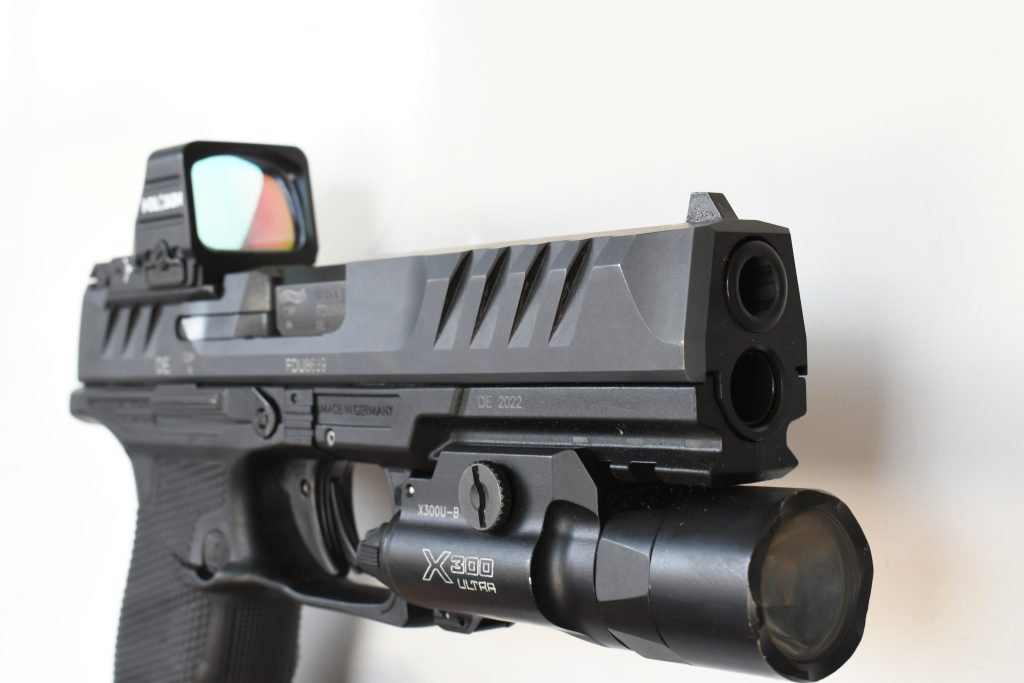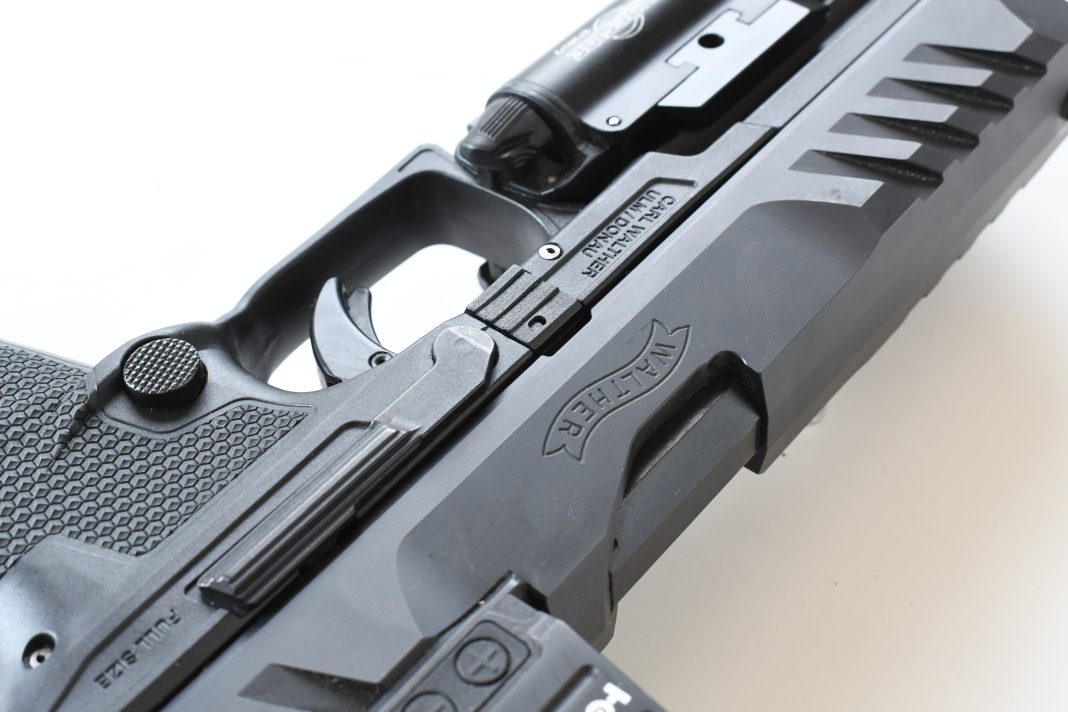The Walther PDP (Performance Duty Pistol) is Walther’s modern polymer frame striker-fired 9mm flagship handgun. While nearly all striker fired pistols work off of similar delayed blowback recoil mechanisms, the PDP family as a whole has three distinct standard features from the factory that objectively sets it apart from its competitors.
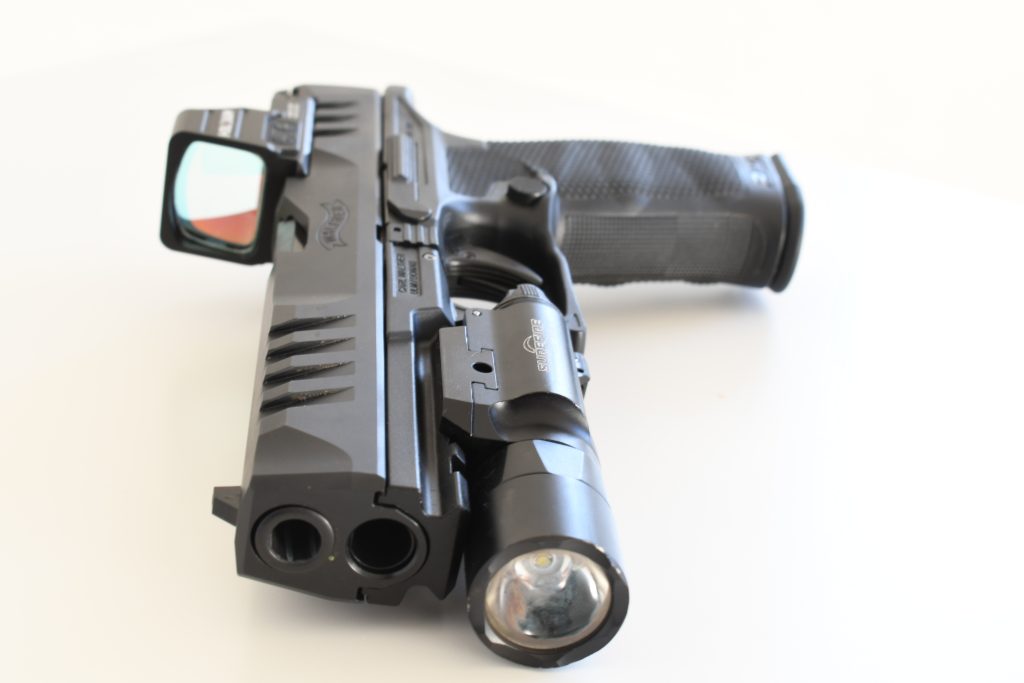
1)The PDP’s pistol grip is extremely ergonomic and fits a wider variety of hand sizes well.
2)Each member of the standard PDP family Includes the Walther PDT (Performance Duty Trigger) by default. It feels like a clean breaking match trigger.
3)Walther designed the PDP to be red dot compatible from its inception, so all models are optics-ready with a deep pocket for the plate and optic.
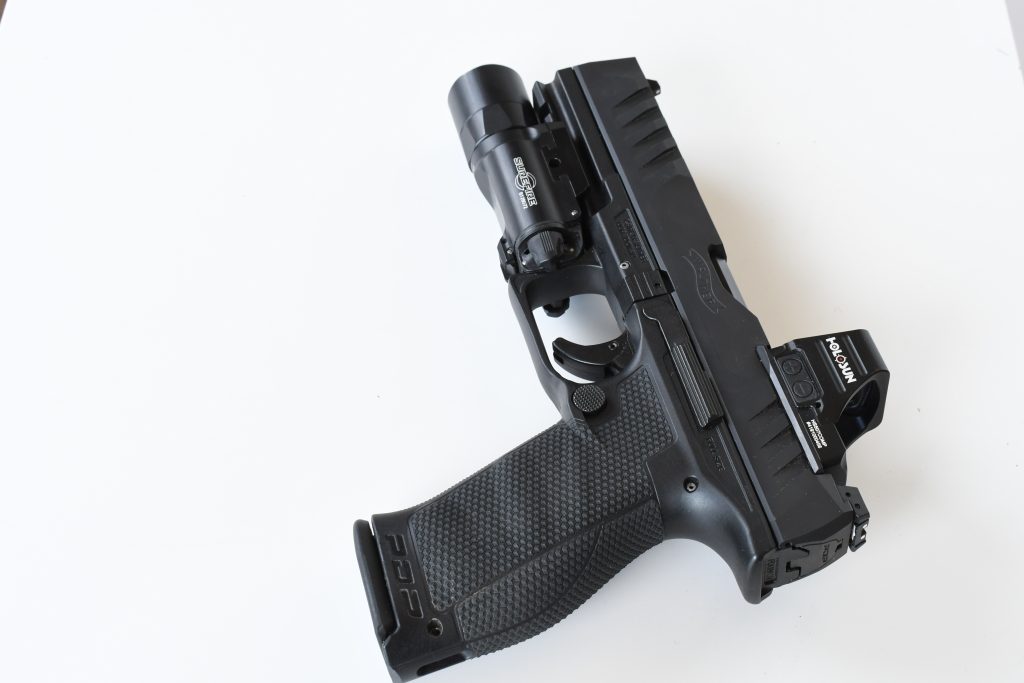
With regards to many of the standard “go-to” striker pistol models that existed before the PDP, upgrading these guns in terms of grips, triggers or optics cuts usually costs extra. With most PDPs having a $650 real world retail price, I think the PDP seems like a fair deal. Between the cost of upgrading triggers, modifying the grips and sending the slide out for milling (if the other gun isn’t optics ready), you come out ahead with the PDP. Even though these guns were only released in 2021 and are fairly new, they do count on decent holster support from serious partners. Dark Star Gear, PHLster, Safariland, Comp-Tac and Tenicor all offer holsters to support your PDP.
SHOOTING THE WALTHER PDP

I shoot the 5-inch full-size PDP, similar to what Luke Cao used to win his division in Thailand at the 2022 IPSC World shoot. The form factor of my Full-Size 5″ PDP is comparable to my Glock 34, as it’s also full-size semi-auto with a long slide. My Glock 34 is one of my personal GOATs, but the Walther PDP’s nicer trigger and improved ergos are welcomed improvements. The gun isn’t difficult to point and present, while the addition of the lower-than-typical optic cut makes target acquisition a breeze with a mounted red dot sight.
Describing felt recoil in words is never easy because it’s so subjective and everyone’s experiences are different. Perhaps my PDP feels only marginally snappier than my Glock 34 when shooting factory 115-grain ammo [CCI Blazer] but frankly, talking about a full-size 9mm’s felt recoil is a waste of time. I want to stress how hard it can be to articulate something that every shooter perceives differently.
Rapid fire and follow up shots are very easy, and the ergonomic friendliness of the grip gives shooters good control of the PDP. With the match grade PDT trigger and a mounted dot, the only limitation to making good shots at longer distances is the shooter. I actually have a dirty little secret: this gun is so easy to shoot that I get very relaxed when shooting NRA-B8s at 25 yds. It makes me drop my guard a little, the exact same way I do with a 2011. However, the Walther PDP in hand truly provides me with a very high degree of confidence. Since much of shooting is mental, my confidence with the PDP isn’t insignificant. (I’ve also been working on my issue by doing dry-fire trigger control drills and watching the how the dot moves).
Since summertime 2023, this Walther has become my shooting workhorse. To kick off my longer term evaluation of this pistol, I took it directly out the box to train with Riley Bowman. Ever since, my 5-inch Full-Size PDP has also been the handgun I use to dry-fire and it’s my default USPSA match gun for Carry-Optics these days. Using a factory RMR-pattern mounting plate, I installed Holosun’s new HS507COMP sight. I used the PDP to review the sight itself, and which also hasn’t come off since.
Like with nearly every other pistol I review, I attach a Surefire X300 “U-Boat” in order to use my PHLster OWB Floodlight because it’s so convenient. Other than shooting different handguns for review, my Walther PDP will remain my go-to pistol for the foreseeable future. The combination of the easy-shooting PDT trigger and the “big” competition-focused dot make this a gun that’s extremely easy to shoot. Novice or expert, this makes the Walther PDP very fun to shoot.
One of the reasons it has taken me so long to write this review is because I wanted to wait until I fired at least 1,000 meaningful rounds of ammo in practice, training and matches. Most of that ammo is my go-to 115 or 124-grain reloads loaded with 4.5-grains of HP-38 and whatever primers I have on hand. Factory-wise, I’ve primarily shot Federal, Fiocchi and CCI Blazer Aluminum/Brass (all 115-grain FMJ) and a smattering of South African PMP 124-grain FMJs. Before I get crucified, I will admit I haven’t done much with 147-grain bullets nor do I stock many of them. As a rule of thumb, European made pistols seem to do better with faster 124s and that’s what I stick to and what I also prefer to load. Lastly, there’s that factor of my personal confidence with 124-grain 9mm bullets.
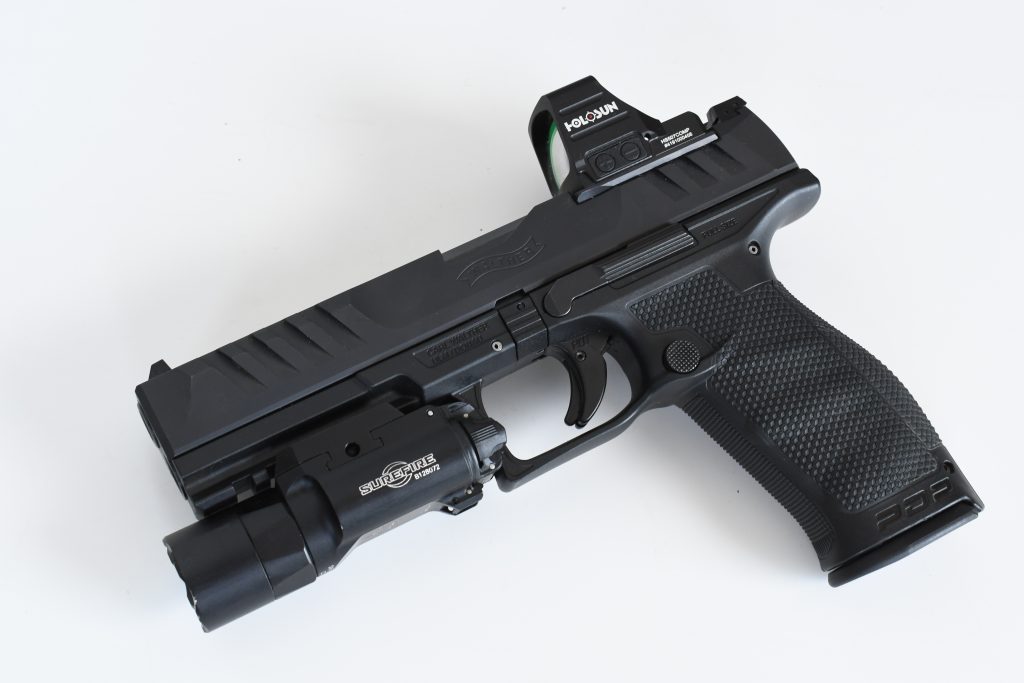
THE WALTHER PDP IN DEPTH
THE GRIP AND PERFORMANCE DUTY TRIGGER
The Walther PDP’s grip has a slightly smaller circumference than a Glock or an M&P. Not surprisingly, it’s reminiscent to the grip on my Canik Rival-S, but more nuanced features. This slightly narrower circumference means it’s friendlier to shooters with smaller hands. This enables them to grip and drive the pistol more advantageously. The PDP’s backstrap has an oval profile and its uppermost portion is deeply radiused allowing the web of the firing hand to get a good grip. The middle section of the backstrap is convex to fill into the palm and help support the entire handgun.
Smaller and larger backstrap inserts are included from the factory. They’re easily replaced by drifting a roll pin and these alternative inserts keep the same oval profile. They’re just either larger or smaller. Competition oriented aftermarket inserts made of solid brass that add more weight to the gun to better absorb recoil are also available, as more than a handful of serious competitors field these guns. I’ve been shooting the PDP primarily with the standard backstrap, and I can’t decide whether I like that one or the “larger/fuller” backstrap better.
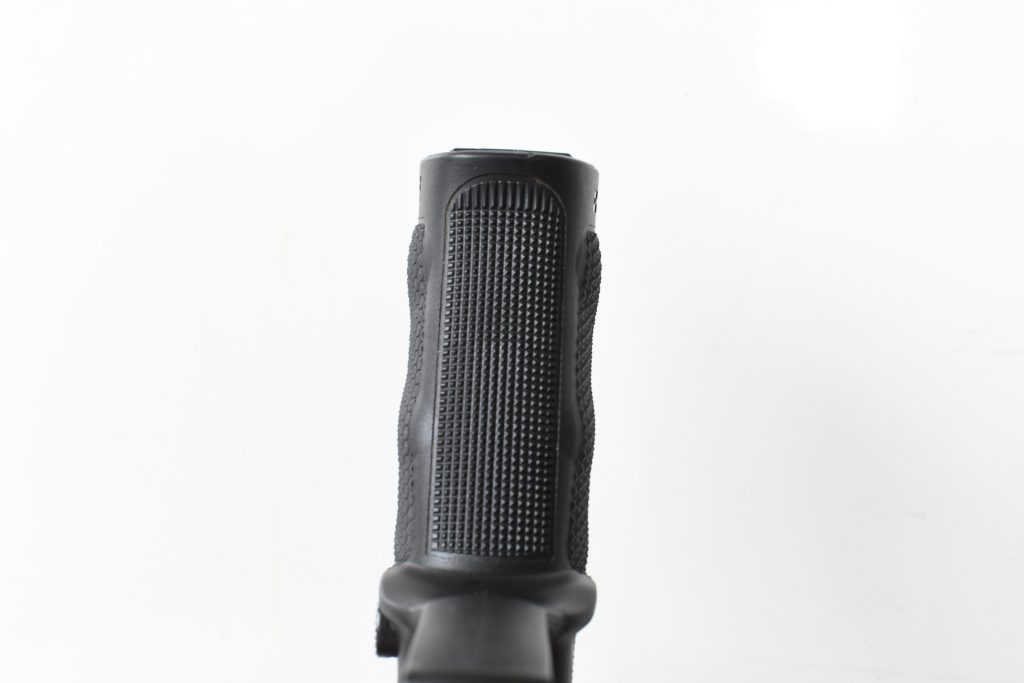
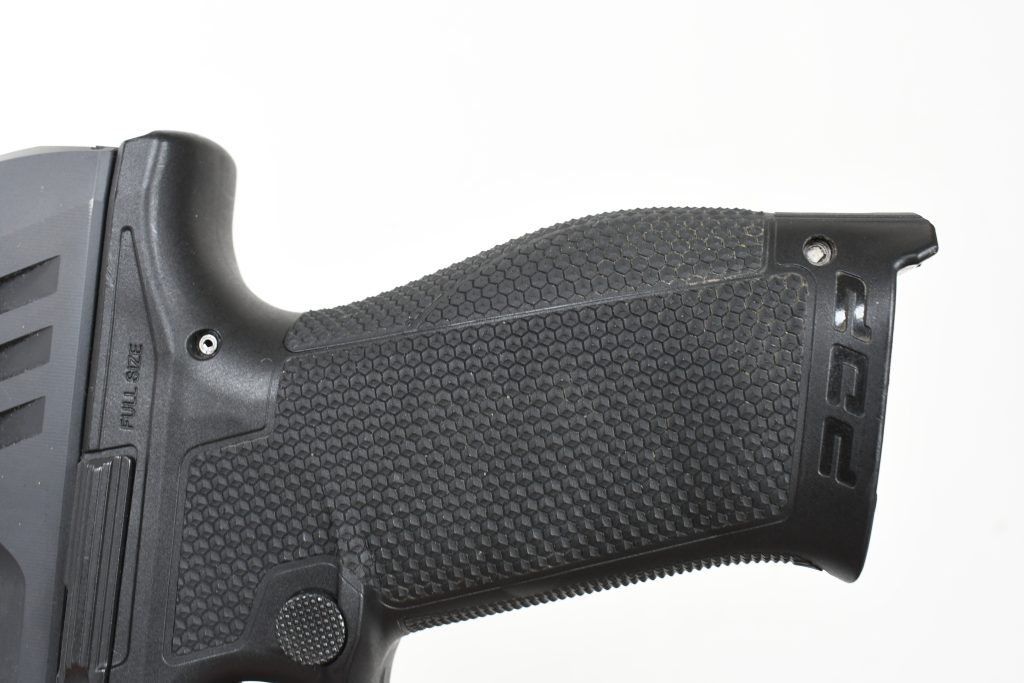
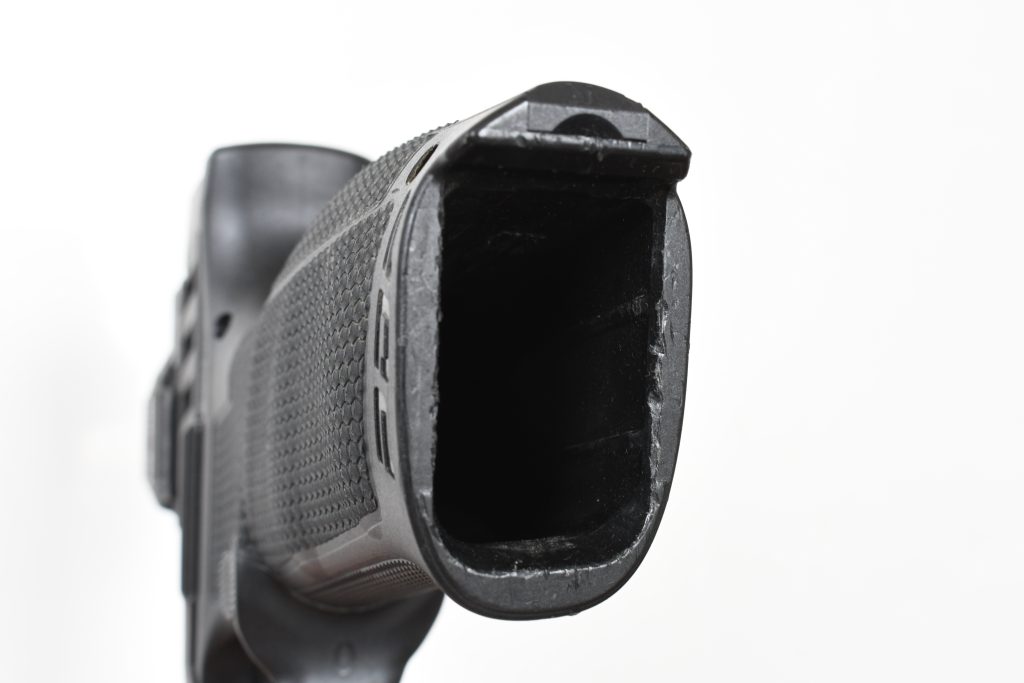
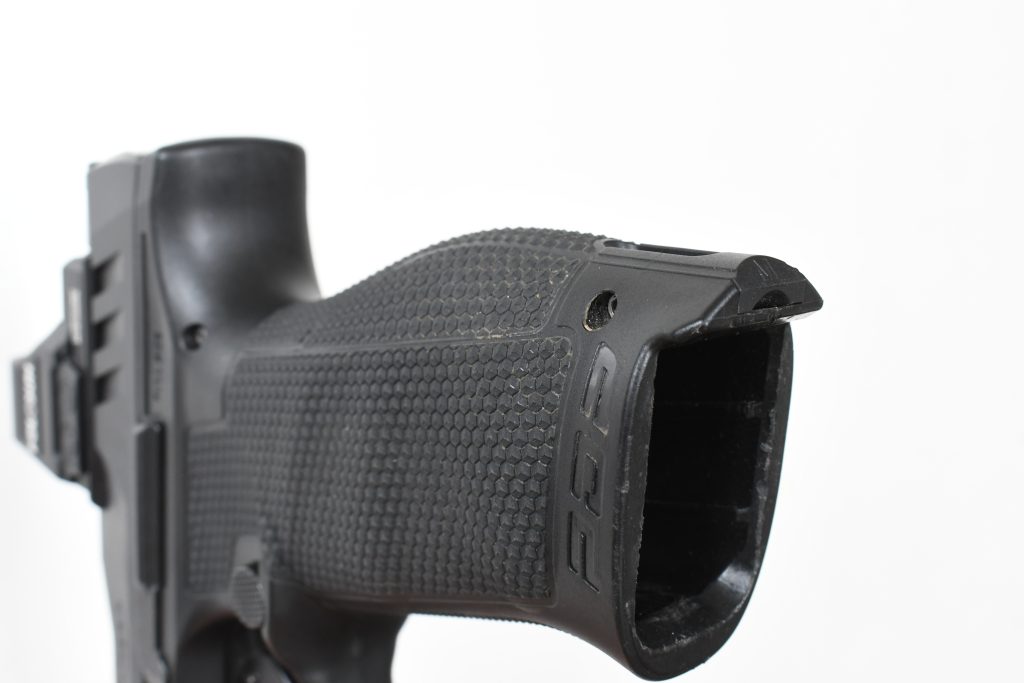
Following the oval profile, the circumference of the lowest part of the PDP’s grip tapers around the magazine well. I like this because the tapering in this area provides good real estate for the pinky finger to wrap around and support the firing hand optimally. The magwell itself isn’t belled out much at all, but interestingly I hadn’t given it much thought. Suffice to say that with over 1000 rounds through my gun, it hasn’t honestly been an issue. Like weighted brass backstrap inserts, magwells are also available for competition.
The Walther PDP’s frontstrap is long enough to offer the majority of shooters plenty of space for the fingers of their shooting hand comfortably. This same area is also fairly large so that the hand can quickly grab the gun and build a solid master grip. Thankfully, the frontstrap is free of finger-grooves. The area where the trigger guard and frontstrap meet is decently undercut. The material around the trigger guard flanges out to cradle the reversible magazine release and to alleviate the hot spot where most people’s middle finger knuckle rubs on the trigger guard. It’a a nice touch but I think this material could be slightly narrower to better access the magazine release. This hasn’t been a glaring issue for me, just a preference. There’s a ledge at the bottom of the frontstrap that also helps to leverage the shooter’s pinky pressure along with the tighter circumference described above. The left and right sides of the pistol grip have gentle undulating longitudinal finger grooves.
All-over, the PDP’s grip has medium intensity texturing that Walther calls Performance Duty Texture. It has a very distinctive tetrahedral shape which doesn’t grab and “cut” skin/surfaces the way full on metal checkering does. I find the Performance Duty Texture to be less aggressive than the default M&P 2.0 texturing, but more assertive than what’s found on a 5th generation Glock.
Besides the reversible magazine release, the Walther PDP is equipped with ambi slide stop levers. They are great to use in that they don’t take a lot of pressure to actuate, however it’s fairly easy to inadvertently maintain pressure on them with the thumb which causes the slide not to always lock back on empty. Of course an individual’s specific grip and thumb size are factors, but this seems to happen to me frequently enough to report it. It has never been an issue in USPSA matches, but when I shoot B8s on the square range the slide almost never locks back after the 10th round. It’s not something I’ve observed with other shooters, so this issue is specific to me and how I grip this Walther. That said, I’m grateful for those ambi slide stop levers because I’m left-handed and it does make the gun smoother overall.
The Performance Duty Trigger is standard in regular Walther PDP variants. Like most other striker-fired triggers, it has a bladed safety, and its face is curved. As far as striker triggers go, the PDT is very straightforward. It’s just that Walther has mechanically optimized it for a very clean break. There is no spongy feel to the break nor any ambiguity. The very crisp break feels almost like a precise, mechanical “click.” Once it reaches its breaking point, it stops moving so there is no over travel. I am extremely satisfied with this trigger and feel no need to replace it or mess with it. In fairness, Walther also sells an upgraded trigger they call their Dynamic Performance Trigger, which is a metal, flat faced trigger with a shorter travel to the breaking point. The DPT trigger has the same precise breaking “click” with no over travel and it’s standard on the competition-focused PDP SKUs, including the newly released PDP Match Steel Frame.
MOUNTING OPTICS
All PDP variants are optics-ready, and Walther will send customers a free footprint specific optics plate after buying a new pistol and filling out an online order form. Mine arrived in a little less than two weeks after submitting the form. Something to be aware of is that earlier PDPs have a different optics cut, and one needs to be careful when sourcing a PDP optics plate to ensure they receive a compatible one as they are not cross compatible. I included a photo below (courtesy of Forward Controls Design) that clearly shows the differences between the original (V1) and the current (V2) slide cut. As a matter of fact, Forward Controls Design is a great place to source an optics plate for the PDP (either version) besides Walther USA. The next photo in the gallery is a cell-phone picture I casually took of a Forward Controls Design Version1 OPF-PDP, RMR plate that we sourced for a [different] earlier 2021 built 4.5-inch PDP. Even looking at the plate shows how relatively deep the cut on the slide is. [FCD isn’t paying me for the plug, but their company is built around attention to detail and they sell well-made parts.] Because all PDP models and trims come with an optics cut, direct milling isn’t an option for this pistol. The factory optics cut is milled deep enough that taller suppressor height iron sights may not be needed (depending on the specific model of mounted dot, of course).

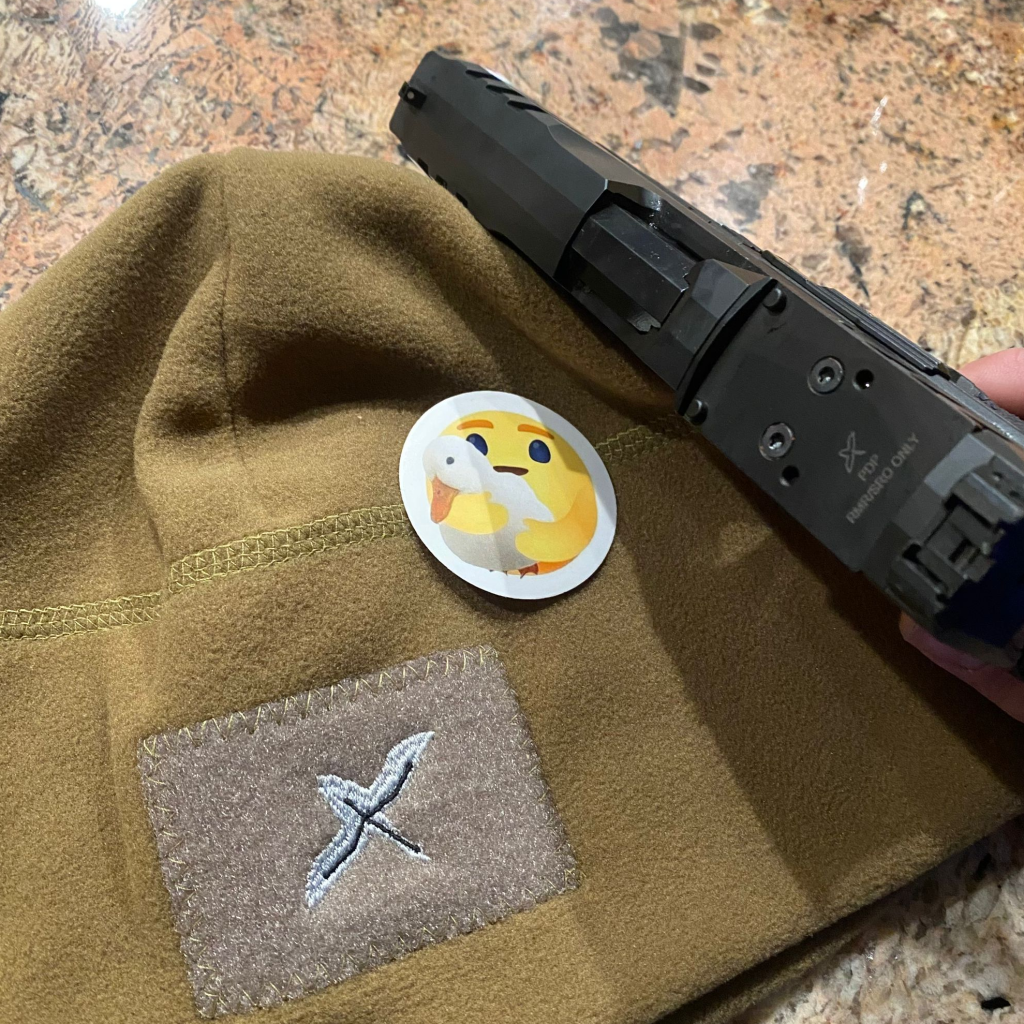

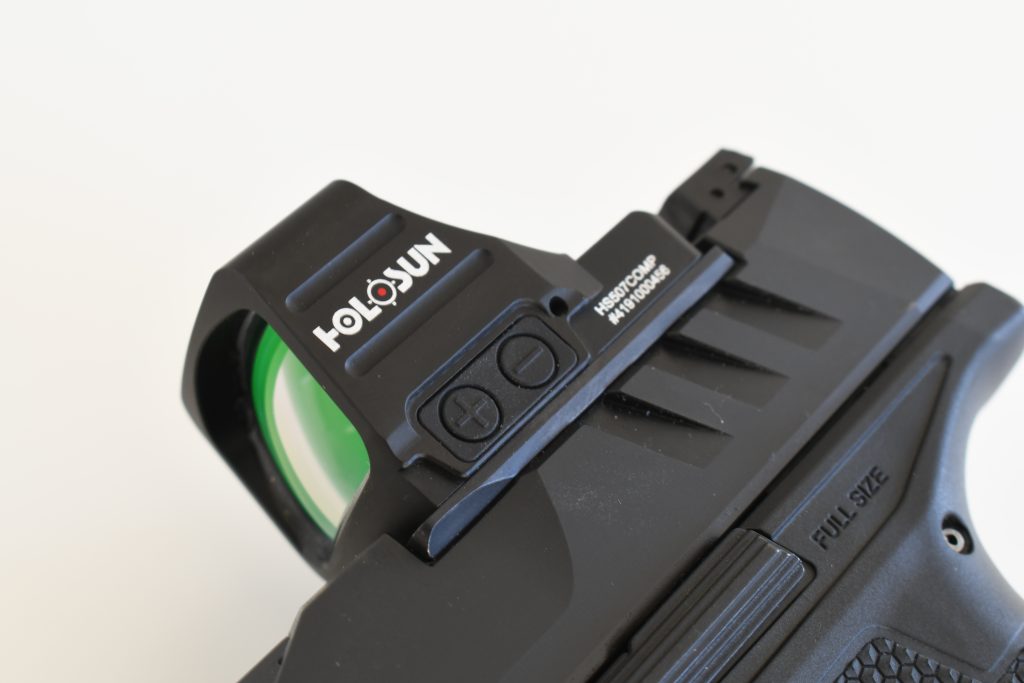
THE SLIDE AND FRAME
Walther PDP slides are fairly wide in order to accommodate the “Superterrain” slide serrations that are unique to these guns. These serrations are fairly large and found both towards the front and directly underneath the optics cut. The logic behind these is that while most pistols’ slide serrations are cut beneath the surface of the slide, the Superterrain serrations are cut to be flush with the outermost surface. In return, shooters get oversize and easy to grip serrations that remain flush and don’t protrude any further. In my shooting so far, I’ve got no complaints.
Even though the slide is obviously optimized for red dot shooting, the slot for the front sight and the dovetail for the rear sight are designed to accept Glock pattern iron sights. With the popularity of the latter, this means that iron sight options for any Walther PDP are plentiful.
PDP frames are available in two sizes, compact and full-size. However, both of these frames and all slide lengths (except for the PDP-F series) work off the same recoil spring assembly, which means that end users can mix and match any length slides to any size frames. Full-size frames use 18 round magazines as standard while compact frame sizes work off of 15 rounds. The PDP uses the proven double-stack magazine scheme first seen in use with the Browning Hi-Power that is still popular across a wide variety of 9mm pistols including Beretta 92s, Sig P22Xs, CZ-75s, CZ Shadow 2s, Caniks, etc. Mec-Gar, an Italian company with an excellent reputation for making quality magazines, is the OEM purveyor of Walther PDP factory magazines. For competition use, extended springs, followers and basepads are available from the aftermarket.
THE TAKEAWAY
Normally, being late to the party (as the PDP is a very recent design) makes it harder to get noticed, and naturally, the striker-polymer market pool is very full and deep. However, showing up to the party later is not necessarily a bad thing. In fact, it actually benefits the Walther PDP. While all major makes and models of handguns have been successfully adapted to mount reflex sights, the PDP has the benefit of having been designed around life with a dot from the start. Everything about the PDP’s design is deliberate so there was never any need to adapt or compromise. This seems to be working well for Walther, and I’m predicting that other brand new handgun designs will keep following this trend. (See the new Echelon from Springfield, case in point). Dots aren’t going anywhere and are here to stay.
In the thousand or so rounds I’ve fired through the gun I’ve really come to appreciate it. Most of my complaints are minor, and they revolve around the slide stop levers sometimes clashing with my thumbs or the shelf that cradles the bottom of the magazine catch. My other critique is that for how common Mec-Gar double stack magazines are, the retail price for PDP specific magazines seems relatively high. Overall, this has been an accurate and great-shooting pistol, and downright fun with that PDT trigger too. Whether expert or novice, I think the Walther PDP has something to offer to every shooter because it’s so easy to shoot well. Beginners can start getting comfortable and confident with their skills while seasoned shooters can mentally focus on higher level performance. Walther calls this their “do-all” handgun and I am in agreement. It’s duty-grade reliable and its standard features are frankly good enough to shoot in IDPA or USPSA bone-stock. Just mount a dot and add a shooter.
